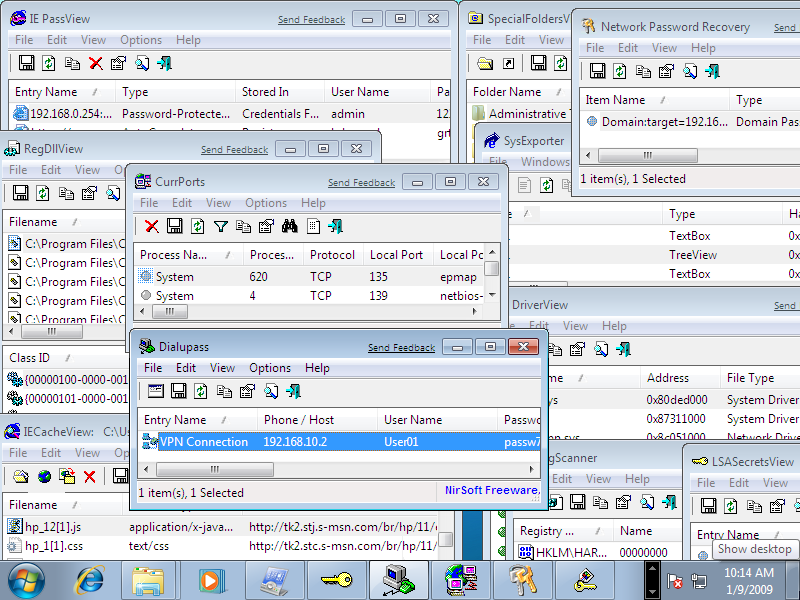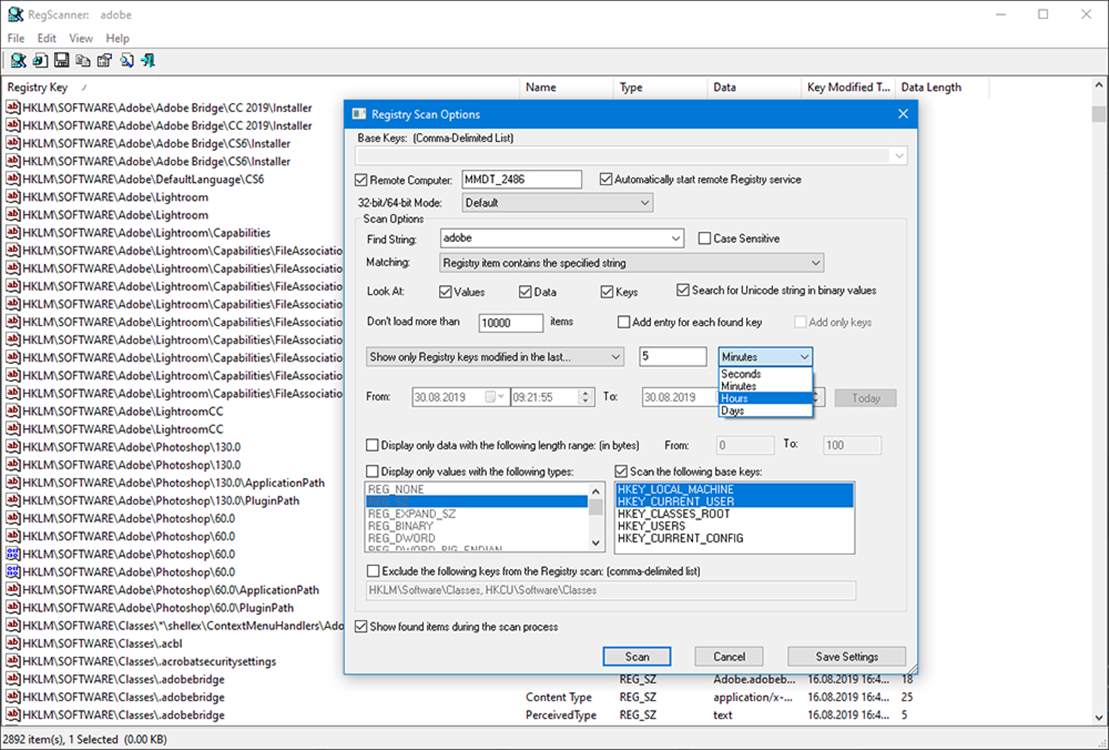Mar 28, 2016 I seem to have Nirsoft's IE Passview installed - as part of WSCC (which installs, updates and manages Sysinternals and Nirsoft utilities). Although IE Passview states that it supports up to IE10, after saving a password in IE11, it had no trouble in retrieving the entry. IE PassView is a small password management utility that reveals the passwords stored by Internet Explorer Web browser, and allows you to delete passwords that you don't need anymore. It supports all versions of Internet Explorer, from version 4.0 and up to 9.0. For each password that is stored.
Internet Explorer stores the passwords, which you have chosen to save, in encrypted form. Earlier it used to store in the Registry but now it uses the Credentials Manager. While you can always use the built-in Credentials Manager to manage IE passwords, if you are looking for an easy-to-use portable password manager for Internet Explorer 11 on Windows 8.1, you may check out IE PassView. IE PassView will help you recover such forgotten or lost passwords in Internet Explorer With its help you can also edit, delete and manage passwords.
Recover Forgotten Internet Explorer Passwords
IE PassView can reveal the passwords stored by Internet Explorer. It does not require any installation process or additional DLLs. In order to start using it, just copy the executable file (iepv.exe) to any folder like, and run it.
After running iepv.exe, IE PassView scans all Internet Explorer passwords in your system, and display them on the main window.
Types of passwords IE Pass View Recovers
AutoComplete Passwords
it is a type of password that is seen on a web page containing Username & Password field along with the login button. When you hit the login button Internet Explorer may try to seek permission to save the password for you as AutoComplete password for your future login.
HTTP Authentication Passwords
Some Web sites allow a user to visit or enter only after typing user and password in a separated dialog-box. this is for safety purposes to avoid any instance of hacking or prevent from getting infected by malware. When you at your own will, choose to save the password in this login dialog-box, the password is saved as HTTP authentication password.
FTP Passwords
Simply the passwords of FTP addresses
Starting from version 7.0 of Internet Explorer, Microsoft has changed the way it stores the password. Former versions of IE saved passwords in a special location in the Registry known as the “Protected Storage”. But in the recent versions, passwords are saved in different locations. Each type of passwords has some limitations in password recovery:
- AutoComplete Passwords: These passwords are saved in the following location in the Registry: HKEY_CURRENT_USERSoftwareMicrosoftInternet ExplorerIntelliFormsStorage2
The passwords are encrypted with the URL of the Web sites that asked for the passwords, and thus they can only be recovered if the URLs are stored in the history file. - HTTP Authentication Passwords: These passwords are stored in the Credentials file under Documents and SettingsApplication DataMicrosoftCredentials , together with login passwords of LAN computers and other passwords.
Due to security limitations, IE PassView can recover these passwords only if you have administrator rights. Please note that some Antivirus program may detect this utility as infected with a virus however, this is not true.
IE PassView free download
You can download IE PassView from Nirsoft.
These links may also interest users of other browsers and services
- Recover Messenger, Yahoo, GTalk, IM Chat clients Passwords with MessenPass.
Related Posts:
Compatible with Windows 10, 8, 7, Vista, XP and 2000
Optional Offer for WinThruster by Solvusoft | EULA | Privacy Policy | Terms | Uninstall
Overview of Iepv.exe
What Is Iepv.exe?

Iepv.exe is a type of EXE file associated with IE PassView developed by NirSoft for the Windows Operating System. The latest known version of Iepv.exe is 1.2.6.0, which was produced for Windows XP. This EXE file carries a popularity rating of 1 stars and a security rating of 'UNKNOWN'.
What Are EXE Files?
EXE ('executable') files, such as iepv.exe, are files that contain step-by-step instructions that a computer follows to carry out a function. When you 'double-click' an EXE file, your computer automatically executes these instructions designed by a software developer (eg. NirSoft) to run a program (eg. IE PassView) on your PC.
Every software application on your PC uses an executable file - your web browser, word processor, spreadsheet program, etc. - making it one of the most useful kinds of files in the Windows operating system. Without executable files like iepv.exe, you wouldn't be able to use any programs on your PC.
Why Do I Have EXE Errors?
Ie Passview Windows 7
Because of their usefulness and ubiquity, EXE files are commonly used as a method of delivery for virus / malware infection. Often, viruses will be disguised as a benign EXE file (such as iepv.exe) and distributed through SPAM email or malicious websites, which can then infect your computer when executed (eg. when you double-click the EXE file).
In addition, viruses can infect, replace, or corrupt existing EXE files, which can then lead to error messages when IE PassView or related programs are executed. Thus, any executable files that you download to your PC should be scanned for viruses before opening - even if you think it is from a reputable source.
When Do EXE Errors Occur?
EXE errors, such as those associated with iepv.exe, most often occur during computer startup, program startup, or while trying to use a specific function in your program (eg. printing).
Common Iepv.exe Error Messages

The most common iepv.exe errors that can appear on a Windows-based computer are:
- 'Iepv.exe Application Error.'
- 'Iepv.exe is not a valid Win32 application.'
- 'Iepv.exe has encountered a problem and needs to close. We are sorry for the inconvenience.'
- 'Cannot find iepv.exe.'
- 'Iepv.exe not found.'
- 'Error starting program: iepv.exe.'
- 'Iepv.exe is not running.'
- 'Iepv.exe failed.'
- 'Faulting Application Path: iepv.exe.'
Nirsoft Ie Passview
These EXE error messages can appear during program installation, while a iepv.exe-related software program (eg. IE PassView) is running, during Windows startup or shutdown, or even during the installation of the Windows operating system. Keeping track of when and where your iepv.exe error occurs is a critical piece of information in troubleshooting the problem.